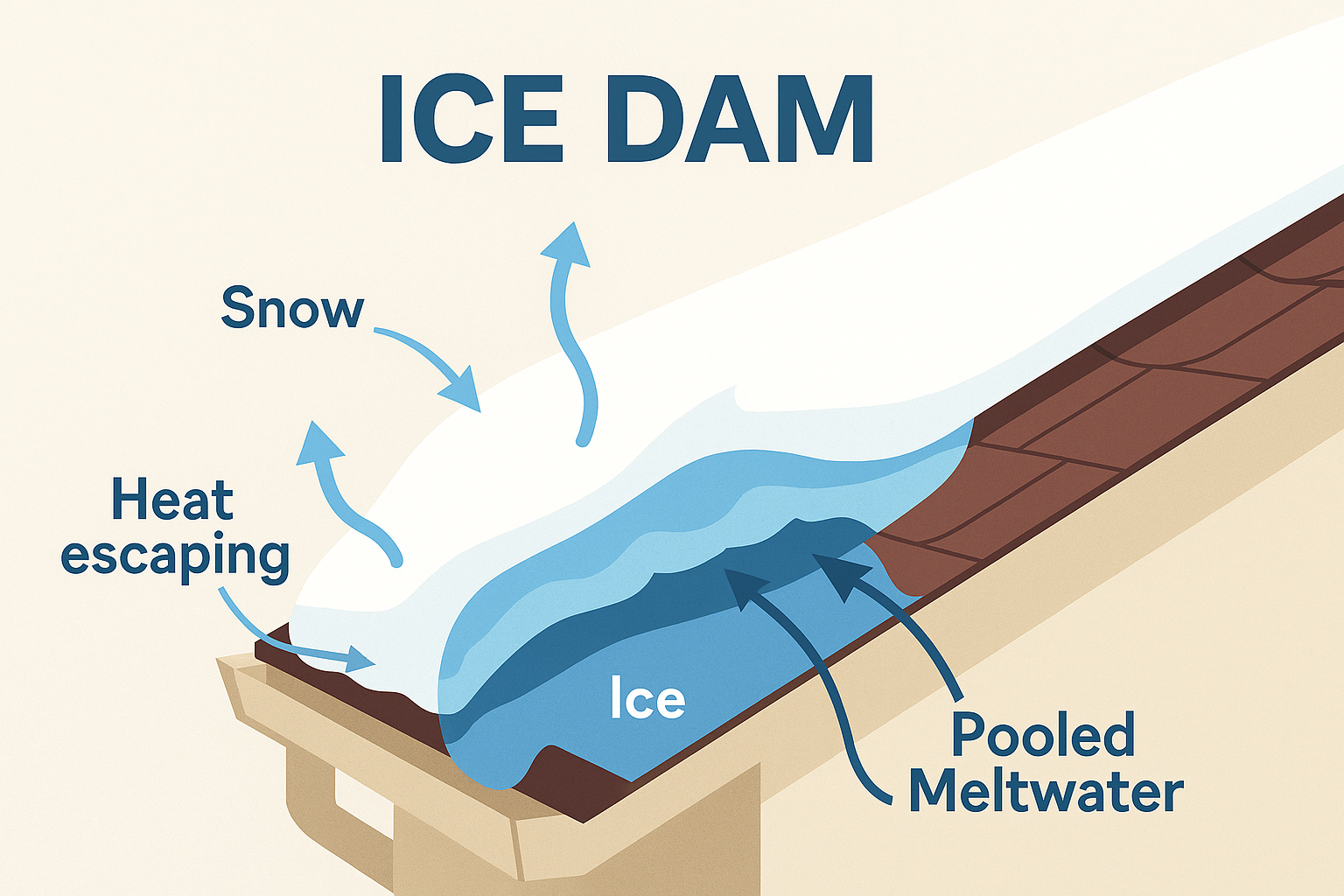Ice dams form when melting snow refreezes at the roof edge, blocking water from draining properly. This can cause leaks, water damage, and roof deterioration if left unchecked.
Ice Dam Formation Explained
To better understand how ice dams form, see the illustration below. It shows how heat escapes from the attic, melts snow, and causes water to refreeze at the roof's edge-creating damaging ice buildup.

Illustration: How ice dams form on your roof
Why Do Ice Dams Form?
Heat escaping from your attic warms the roof, melting snow. When this meltwater reaches the colder eaves, it refreezes, creating ice buildup that traps more water behind it.
Tips to Prevent Ice Dams
- Improve Attic Insulation: Keep your attic cold by sealing air leaks and adding insulation to prevent heat from warming the roof.
- Ensure Proper Roof Ventilation: Good airflow helps maintain a consistent roof temperature and prevents uneven warming.
- Keep Gutters Clean: Clear debris so melting water can drain freely and not pool at the roof edge.
- Use Ice and Water Shield Membranes: Install underlayment barriers that protect your roof deck from leaks caused by ice dams.
- Remove Snow Safely: Use a roof rake to remove snow buildup, reducing the chance of meltwater pooling and freezing.
- Consider Heated Cables: In extreme cases, electric cables can be installed to melt ice and prevent dam formation.
When to Call a Professional
If you frequently experience ice dams or notice leaks and damage, it's best to consult a roofing expert. They can assess insulation, ventilation, and roof condition to recommend long-term solutions.
Keep Your Roof Safe with RoofersSearch
Need help preventing ice dams or repairing winter roof damage? RoofersSearch connects you with reliable local roofing contractors.